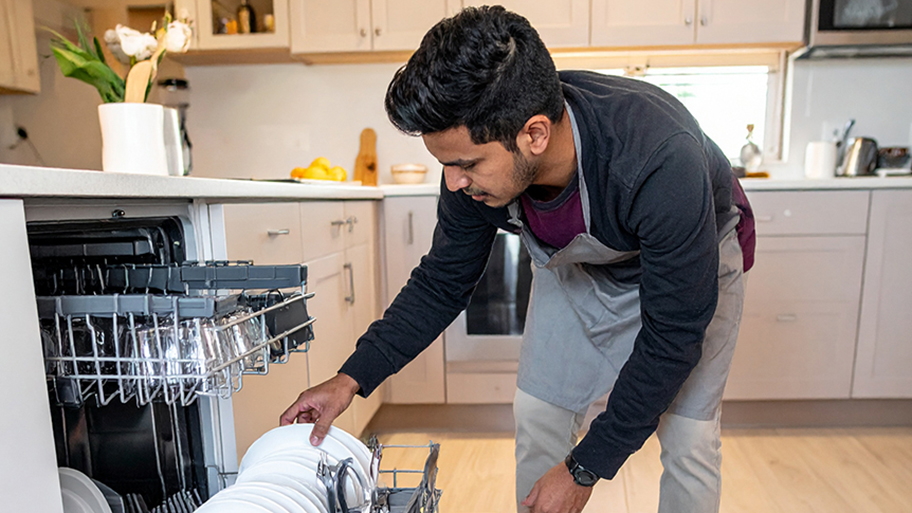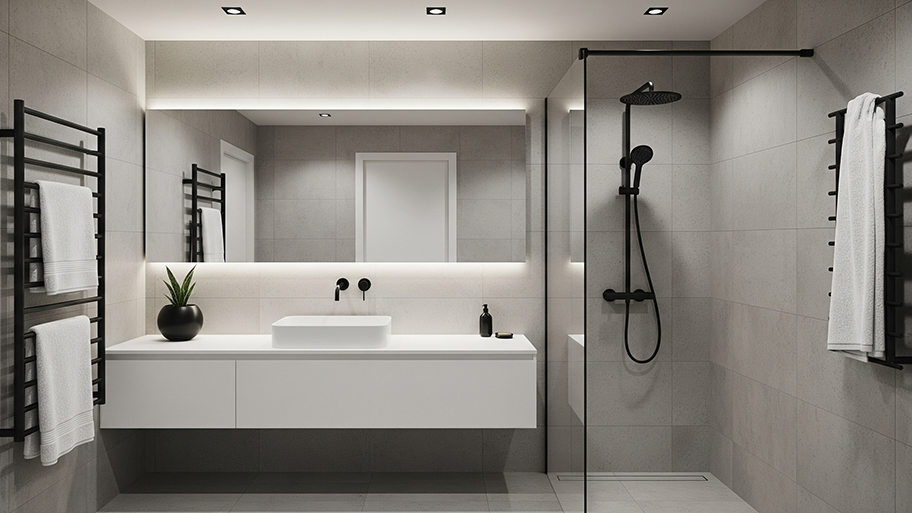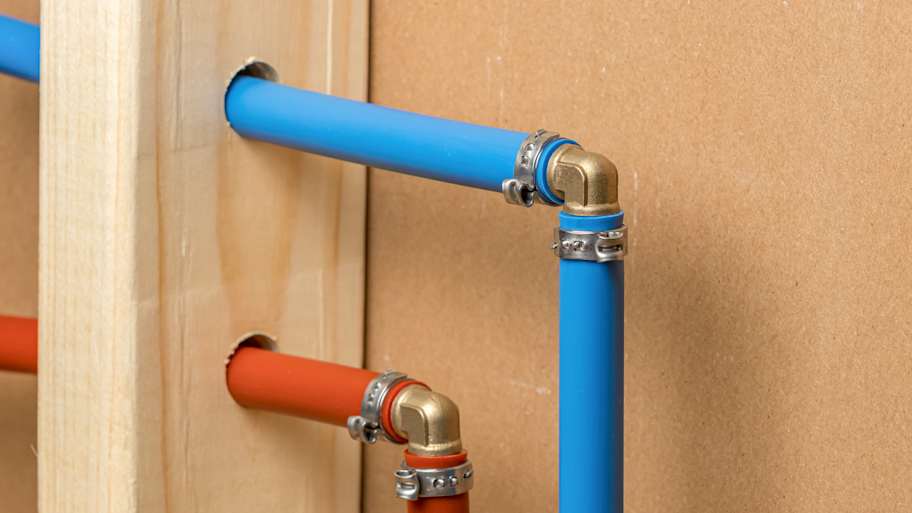
Making updates to your home? You may need to move your gas line to fuel new appliances or meet code regulations. We’ll cover the cost of moving a gas line, plus project tips.
Don't let ice burst your bubble—or your outside plumbing—this winter


A freeze-proof faucet protects your outdoor spigot from freezing and bursting.
The design slopes downward toward the spout to drain water.
An interior shut-off valve also protects water from building up and freezing in the pipe.
These faucets are also called frost-proof faucets, spigots, or hose bibs.
While the rest of the pipes sit warm and cozy inside your home, the outdoor spigot takes the brunt of winter weather—but a freeze-proof faucet can help. Frozen pipes, as a homeowner knows all too well, can lead to a burst pipe and related water damage. Freeze-proof faucets, however, feature a few simple design differences to ensure you never end up with an ice-filled or shattered pipe.
A freeze-proof faucet is an outdoor spigot designed to discourage ice buildup. Also known as a frost-proof faucet, an anti-siphon spigot, or a free-proof hose bib, these faucets all do the same thing—provide water for your landscape and outdoor needs while battling the effects of freezing temperatures.
When searching for frozen pipes in your home, you're most likely to find them in areas exposed to the cold, such as in basements or along exterior walls. An outdoor spigot doesn't have any protection from plummeting temperatures unless the design takes the effects of winter into consideration.
You should winterize your pipes before temperatures regularly drop to 32 degrees Fahrenheit. Depending on where you live, this could start as early as September.
There are several factors to consider when choosing a freeze-proof faucet that’s right for your home.
It’s important to select the right stem length for your freeze-proof faucet. The right measurement all depends on your home's siding or exterior surface. If the spigot is connected within the drywall, you’ll likely need a shorter stem length—no more than six inches. However, if the faucet protrudes from the basement or crawl space through the exterior wall, you’ll need a 10-inch or 12-inch spigot.
| Location of Spigot | Stem Length Needed |
|---|---|
| Within drywall | 6 in. or less |
| Basement/crawlspace | 10 or 12 in. |
You can DIY a freeze-proof faucet installation, but you’ll want to be sure of your skills before you do. After all, you’re installing this to ward off any potential plumbing disasters, so you don’t want to create one with a DIY mishap.
Finding and hiring a local plumber to do the work for you is easy, but the tricky part will be getting it done before the cold weather arrives. Make sure you call early (in summer or fall) for an appointment so that your home’s pipes have their freeze-proof protection in place before the first freeze.
You might view an outdoor faucet as purely utilitarian, but you can get one that’s fairly attractive—at least in the freeze-free faucets category.
Outdoor faucets often come in a brass or stainless steel finish that can easily stand up to the elements. However, more modern units feature a flush mount design and trendier finishes, including the popular matte black stainless steel that’s seen increasingly in kitchen and bathroom hardware.
Of course, function is still quite important for an outdoor faucet, so you’ll want a valve design that’s easy to use. A valve wheel is a classic choice that’s readily available and easy to use. Then there’s a quarter-turn handle that’s also simple to engage. Above all, you’ll want something easy to connect to the plumbing.
Freeze-proof faucets often come in either brass or stainless steel finishes. Here’s a quick rundown of the benefits and drawbacks of both:
Pros
Affordable
Easily available
Can withstand corrosion and cooler temperatures
Cons
Will likely need maintenance or replacement at some point
Pros
Sturdy; lasts longer than brass
Maintenance-free
Comes in various attractive finishes, like black matte
Cons
More expensive than brass
Get to know how a freeze-proof spigot works by looking at its main parts. On a basic level, the design keeps the water moving to make sure ice never gets trapped in the pipe.

Just like a traditional outdoor faucet, the spout and control handle protrude from the exterior of your home, often at knee level on the side or back of your house.
On a freeze-proof spigot, the spout and handle attach to a long supply pipe that extends inside your home. The pipe sits at a downward slope to ensure the extra water flows out of the spout instead of potentially freezing in the pipe.
While all outdoor faucets have a shut-off valve to control water flow, older models place it outside in the cold. Frost-proof spigots move the shut-off valve indoors, often at the end of the interior supply pipe. Its placement discourages water from freezing behind the valve, causing the pipe to burst.
A freeze-proof faucet also features an anti-siphon valve at the top of the pipe. This fail-safe keeps contaminated water from backing up into the pipe and potentially into your home's plumbing. While this doesn't directly relate to freezing pipes, it will keep unsanitary water intended for your landscape from mixing with your drinking water in the event of an extreme change in water pressure. Building codes require homeowners to install a spigot with this anti-siphon feature in some areas.

Replacing an outdoor faucet costs an average of $175, including parts and labor costs for hiring a plumber. If you take on the project yourself, you’ll pay about $10 to $70 for the parts and tools.
Always begin by checking local building codes for outdoor faucets. Some areas require very specific measurements for the diameter of the pipe, an anti-siphon vacuum breaker, and a shut-off valve inside the supply pipe.
While the specifics will vary depending on your faucet model, here is how to install a freeze-proof faucet:
Locate your home's water shut-off valve and stop the flow of water before starting.
Remove the old outdoor spigot by turning the outside of the faucet counterclockwise with a pipe wrench. You may need a friend to steady the pipe connection on the wall's other side.
Directly on the other side of the wall, disconnect the old faucet from the water supply and remove indoor pipe couplings to accommodate the new length of the freeze-proof faucet.
Insert the new pipe and faucet through the exterior hole and attach it to the masonry according to your model's instructions. In most cases, you may need to use a masonry drill bit to bore into the brick.
Seal around the outside connection of the faucet with silicone where it meets the wall.
Next, you'll need to connect the supply pipe of the faucet to your internal plumbing. You can avoid soldering the pipes together if you purchase a faucet with a push-fit connection.
Wrap the connection threads with pipe-seal tape and connect to the internal pipe with pliers, tightening until it is snug.
Turn your home's water back on and test the faucet for leaks and poor connections.
Call a plumber for assistance if you're uncomfortable installing the new faucet.
Ginny Bartolone contributed to this article.
The professionalism was beyond any plumbing service Ive dealt with before. The work was not that of a technician but Ive a master plumber..
Great. Master plumber arrived on time; was professional; presented options and left us with some good plumbing maintenance tips.
Plumb Crazy has been my plumber for almost 14 years. Scott and Daniel are consistently professional, efficient and fairly priced. I wouldn't use any other plumber.
Make sure that the technician is a certified plumber.
Andy is my dynamic plumbing technician. He is very knowledgeable about plumbing. He does the job correctly and doesn't take shortcuts. I'm very satisfied with all aspects of service this company provides.
it took a day for the initial call back ( explained they were very busy). However, when we connected, the plumber arrived in a timely manner, was very professional and helpful. If we are in need of further services, we will call Ingrilli Plumbing to do the work!
I have had Wacker Plumbing to my home three times. Each time they arrived when they said they would and were able to fix the problem. The plumbers were very professional and the work was done in a short amount of time.
From average costs to expert advice, get all the answers you need to get your job done.

Making updates to your home? You may need to move your gas line to fuel new appliances or meet code regulations. We’ll cover the cost of moving a gas line, plus project tips.

A main water shut-off valve controls water flow for your entire home. Here we break down the cost to replace a main water shut-off valve.

Everyone can relate to having toilet issues—we’ve all been there. There are several reasons why your toilet might need repairs, and the cost varies based on the damage.

Save money by learning to DIY install a dishwasher drain hose. You can do it with or without an air gap fitting in less than an hour and a half.

The hidden parts of your shower drain keep everything flowing. Reference our shower drain plumbing diagram to understand how your shower drain works.

Having the right size PEX pipe is a must for your plumbing project. Learn about PEX pipe sizes and dimensions so you can choose the right one for your project.